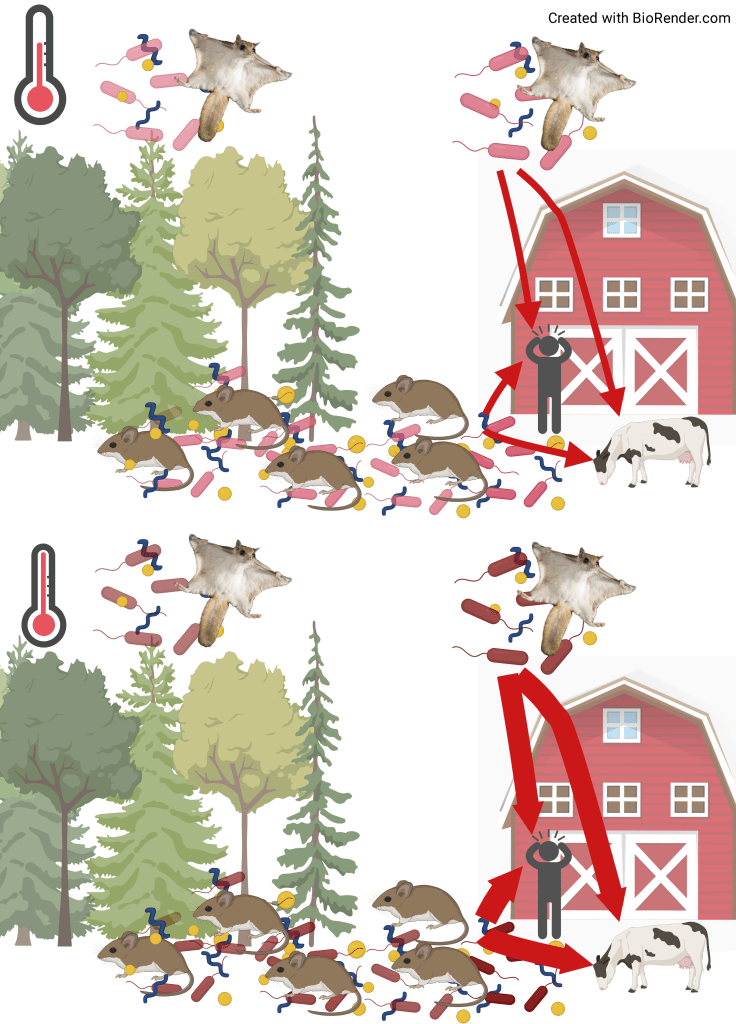I’m pleased to announce that I’m leading a research project this year that was just funded by the University of Maine Rural Health and Wellbeing Grand Challenge Grant Program! This is a collaborative project developed by myself, Danielle Levesque, UMaine; Pauline Kamath, UMaine; and Jason Johnston, UMPI.
The project will provide preliminary data for a larger collaboration, and will support up to 5 undergraduate researchers over the next year, including Rebecca French and Catie Sullivan who have recently joined the Ishaq Lab team. Those 5 students will be mentored across the four labs on two different campuses, and will be involved in the project management experimental design, sample collection and processing, writing, presenting, and social media outreach aspects of the project to give them an interdisciplinary and holistic experience in research.
The full program announcement can be found on the UMaine site:
“Climate Change Effects on Wild Mammal Ranges and Infectious Disease Exposure Risk at Maine Farms.”
Project team: Suzanne Ishaq (PI), UMaine; Danielle Levesque, UMaine; Pauline Kamath, UMaine; Jason Johnston, UMPI.
Abstract: Climate change alters the range distribution of wild animals, often causing species to move further north in Maine, and two recent examples include the Southern flying squirrel (Glaucomys volans) and the white-footed mouse (Peromyscus leucopus). Such movements bring new parasites and endemic pathogens north, as well, which may cause significant disease in native wildlife and local livestock who are naive to these microorganisms. Further, heat stress affects the physiology of mammals and humans, increasing their susceptibility to infections originating in the gut, increasing parasite shedding, or altering zoonotic infectious disease risk by affecting animals, humans, and microorganisms. Collectively, this begs the question, if climate change affects wild mammal health and infectious disease susceptibility; will that also affect infectious disease exposure risk at Maine farms?

